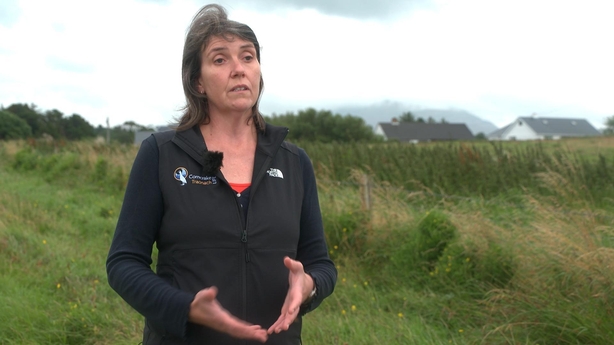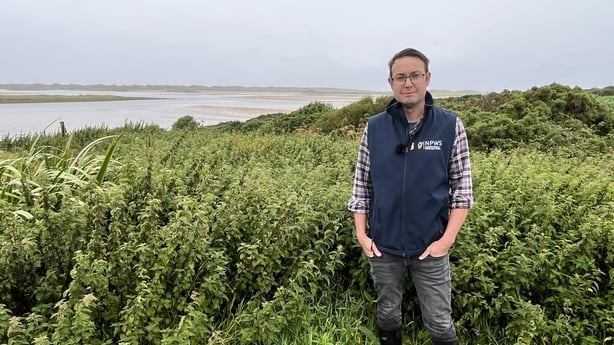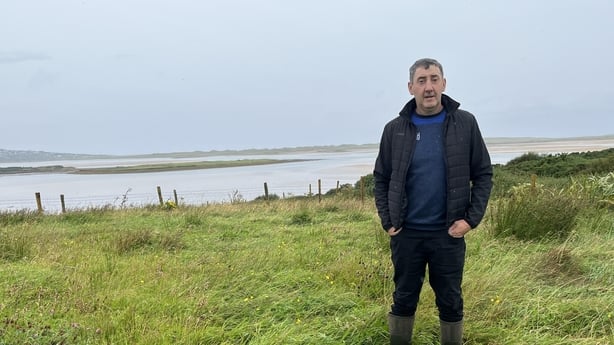The highest number of corncrake territories have been recorded in Ireland for 25 years, according to data from the National Parks and Wildlife Service (NPWS).
There were 233 corncrake territories recorded this year, which represents a 45% increase since 2018.
Although the corncrake is a shy, secretive farmland bird, its distinctive call was once a common feature in the Irish countryside.
Minister of State for Nature, Heritage and Electoral Reform Malcolm Noonan has welcomed the results.
"These impressive results are testament to the collaboration between farmers, landowners and the NPWS-led corncrake conservation projects," the minister said.
Most of the territories recorded in this year’s NPWS survey were in the core breeding areas of Galway, Mayo and Donegal; areas that are part of the Corncrake/Traonach LIFE conservation project.

Since 2021, the five-year project funded through the EU and led by the NPWS has been working on several conservation measures.
The conservation measures taken by farmers include the creation of large patches of nettle or crops for corncrakes to hide, and delaying grass mowing into mid-August to enable corncrakes to raise broods of chicks in safety.
Studies show that mowing fields from the 'centre out’ rather than from the ‘outside in’ can reduce chick mortality by up to 60%.
Agricultural contractors are seen as being key to conservation in ensuring that the birds are not harmed during harvesting time.
The development of ‘flushing bars’ attached to mowers to scare birds out of the way is seen as an innovative development.
Community Engagement Officer with Corncrake LIFE Caitríona Ní Cheallaigh said: "The co-operation of the community, farmers and local stakeholders are critical to the conservation work."
As part of the project there are 250 farmers and landowners managing close to 1,500 hectares of land for corncrakes.

Dr John Carey, who manages the Corncrake LIFE project, said that while there have been year-on-year improvements, caution is needed in terms of optimism.
"Corncrakes are still very vulnerable, both to changes within our landscape but also to the dramatic shift we are seeing in our weather patterns. This summer was very tough on a lot of wildlife, with a notable drop in insect numbers which can have a devastating downstream effect on birds like corncrakes," he added.
Dr Carey noted the positive impact of the "exceptional effort being made by farmers and landowners", and added that "we owe them a huge debt of gratitude and the key now is to keep it all going".
Ciaran Reaney, who co-ordinates the NPWS annual corncrake survey, said they are now "regularly finding birds in new locations like in Co Kerry and farmers and landowners who have not heard the bird in many years".
A survey from the NPWS earlier this year showed an increase of in the national corncrake population by 15 birds, up 7% on 2023 figures.
Targeted grants and schemes have been used as an incentive for the farming community to protect the birds and give them a chance to raise their young.

Those supports include a ‘corncrake habitat scorecard’ to inform a results-based scheme for farmers operated by the Department of Agriculture, Food and the Marine.
Although the Corncrake LIFE project is in its penultimate year, Director General of the NPWS Niall Ó Donnchú said they "will be fully supporting the continuation of the project post-2025".
"The work of the project demonstrates an excellent example of an integrated approach to conservation measures as part of Ireland’s delivery of its obligations under the EU Nature Directives, Mr Ó Donnchú added.
Minister Noonan said the conservation measures have "become a model for community-focused nature conservation".
The corncrake is listed on the Red List of Conservation Concern having significantly decreased in both number and range in Ireland and other European countries.
We need your consent to load this rte-player contentWe use rte-player to manage extra content that can set cookies on your device and collect data about your activity. Please review their details and accept them to load the content.Manage Preferences






